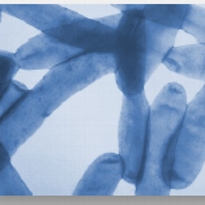Legionella/Legionnaires' Disease

There are approximately 1,000 reported cases of Legionnaires' Disease received annually by the CDC. The CDC estimates there are actually over 25,000 cases of illness each year with between 8,000 to 18,000 associated hospitalizations and more than 4,000 related deaths.
Reported cases of Legionnaires' Disease has increased in recent years. A total of 1,110 cases were reported in the year 2000 and in 2009 there were 3,522 cases reported. Thus, the number of cases of Legionnaires' Disease has increased by 217% since 2000.
In California, there has been two clusters of Legionnaires' Disease outbreaks since 2007.
How is Legionnaires' Disease spread?
Legionnaires' Disease is caused by the Legionella pneumophila bacteria which is naturally found in surface water and soil. People are exposed to Legionella bacteria in indoor environments through household plumbing, water fixtures, indoor water features and HVAC systems that use a cooling tower.
Complex building water distribution systems are more prone to Legionella growth due to a high likelihood of stagnant water conditions exacerbated by temperate water temperatures (77° - 108°F). Stagnant water conditions are associated with dead-legs.
Available Services
The California DEHS program focuses on increasing public awareness of the health risk associated with Legionella and complex building water systems. Our staff can offer training and public education materials for use in educating the public and facility managers about Legionella and associated risk factors. Our staff are also able to provide technical assistance with identifying resources for risk assessments and the development of management plans.
Resources
Legionella Fact Sheet, California Area Division of Environmental Health (PDF)
OSHA's Legionnaires' Disease e-tool ![]()
OSHA Technical Manual CH. 7: Legionella ![]()
Download the ASHRAE Guideline: Minimizing the Risk of Legionellosis Associated with Building Water Systems ![]()


 California Area Office
California Area Office